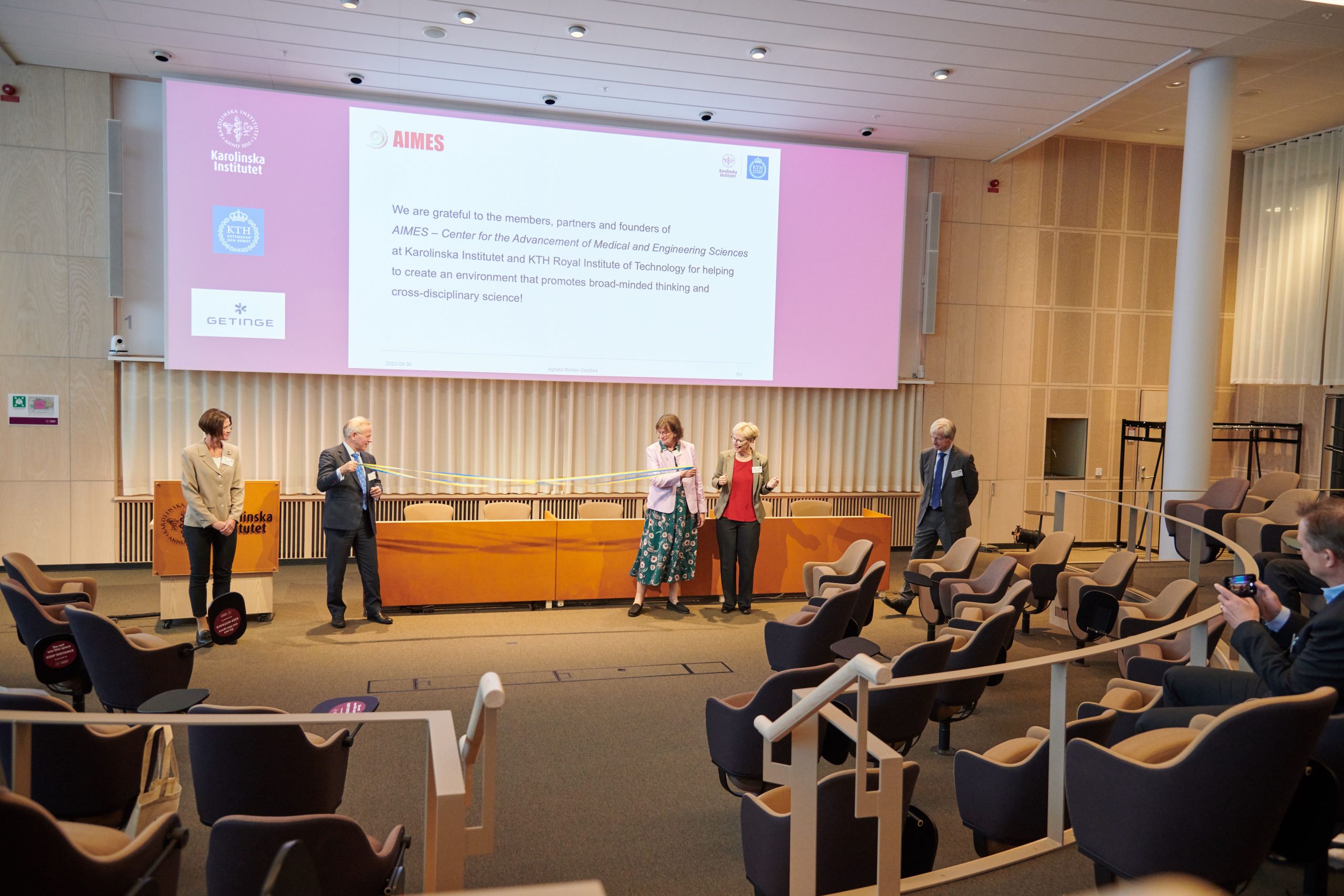The inauguration of AIMES – a centre at the interface of medicine and engineering
Today we celebrated the opening of the Center for the Advancement of Integrated Medical and Engineering Sciences (AIMES). This center – located in Biomedicum – aims to develop new breakthroughs by marrying engineering and technology with biology and medicine. The inauguration of this center is a true milestone in the long-standing collaboration between KTH Royal Institute of Technology and Karolinska Institutet. AIMES is supported by Getinge.
KI’s Strategy 2030 is ambitious and calls for breakthrough research. Looking back, we see that the vast majority of ground-breaking medical advances have resulted from the application of new technologies to medical science. Seminal examples – several highlighted in today’s inauguration symposium – include the pacemaker, the ventilator, and the gamma knife. Swedish science has figured prominently in the development of technology-based medical innovations. AIMES builds on a proud legacy and it is with high expectations that we welcome this center to our campus.
A better dialogue
In my welcome speech today I referred to an international meeting that I attended a while ago and that focused on the interface between medicine and engineering. It struck me at this meeting that many medical experts talked about problems that had no prospect of any technological solution while engineering experts talked about technologies that lacked obvious clinical relevance. To me it was clear that we need a better dialogue between engineering and medicine. Better still, we need to bring engineering and medicine under the same roof, to provide a breeding ground for interdisciplinarity. The inauguration of AIMES should be seen in this perspective.
The World Health Organisation has recognized the importance of instilling engineering into the realm of medicine and biology by highlighting the urgent need to harness the new technologies that are revolutionizing our ability to prevent, diagnose and treat many diseases.
Silos have hindered
Traditional academic silos have hindered healthcare innovation for too long, and with today’s inauguration we are taking an important step to bridge this divide. Over the coming years, AIMES will strive to become an established academic environment that promotes interdisciplinary research, education, innovation, and entrepreneurship – and a sorely needed academic hub where researchers and students from medicine and engineering, from basic and applied sciences, can work side-by-side with industry and healthcare partners to create the kinds of innovations needed to advance human health.
In the symposium today we got glimpses of the research that AIMES seeks to promote. We were introduced to a number of technologies such as bioelectronics, nanobiotechnology, polymer chemistry, and electrochemical sensing. Each of these technologies promises to advance health if creatively coupled to biology and medicine. And they may help us realize the ambitions embedded in UN´s Sustainable Development Goals, as pointed out by Professor Ulrica Edlund, vice-director of AIMES.
Epitome of Life Sciences
With its interdisciplinarity and overarching goals, and with its emphasis on implementation, AIMES stands as the epitome of Life Science. As such the new center builds on the vision promulgated by Erwin Schrödinger – the 1933 Nobel Laureate in Physics (with Paul Dirac). In his book What Is Life, published in 1944, he makes the case that chemistry and physics must be invoked to fully understand life and life processes. He calls for interdisciplinarity in our quest for knowledge. His vision is carried forward by our Strategy 2030. And by our new center: AIMES.
There are many who should be acknowledged on a day like this. Here I would like to extend my thanks to…
- Carl Bennet, Getinge AB
- AIMES director Professor Agneta Richter-Dahlfors,
- AIMES Chair Pam Fredman, and
- KTH President Sigbritt Karlsson,
…for their stamina and unwavering support.

 Photo: Erik Flyg
Photo: Erik Flyg
0 comments